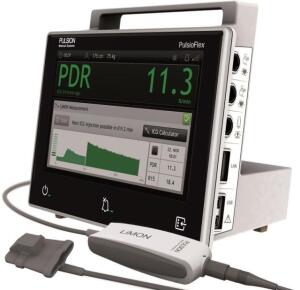by
Lauren Dubinsky, Senior Reporter | May 29, 2015

The portable, finger-probe device
A portable, finger-probe device can measure a brain-dead organ donor’s liver function and potentially save thousands of dollars for each transplant, according to a new UCLA study. Traditionally, surgical teams are dispatched to the donor’s location to visually examine the liver.
“There is a lot of inefficiency in how donor livers are evaluated for transplantation,” Dr. Ali Zarrinpar, the study’s first author and assistant professor of surgery at UCLA, told DOTmed News. “At one extreme we can have teams evaluate too many livers, only some of which are suitable for transplantation, and at the other extreme we can have teams evaluate too few livers and miss out on usable grafts that could save someone’s life.”
It’s been reported that 10 to 15 percent of the time the organ is found to be unusable, and by that time thousands of dollars have already been spent. “What we need to do is to minimize, as much as possible, the costs and the risks associated with evaluating unusable grafts, while maximizing the number of livers that we transplant,” said Zarrinpar.
UCLA teamed up with OneLegacy, a non-profit organ and tissue recovery organization, and used the device to evaluate the liver function of 53 potential organ donors, which determined that eleven of the livers were unusable and 42 were acceptable. The livers’ function was then tested to compare the results obtained with the device, and they found that it successfully predicted what livers would function properly in transplanted patients.
The device works similarly to a pulse oximeter, which attaches to the patient’s finger to measure oxygen in their blood. But in this case, a dye is injected into the donor’s bloodstream and the device is used to measure the rate that the dye is cleared by the liver.
Currently, about 17,000 adults and children have been medically approved for liver transplants and are awaiting available donated livers, according to the American Liver Foundation. But every year, over 1,500 patients die waiting for those livers to become available.
Zarrinpar believes that this device will help increase the number of donor livers and help those sick patients waiting for a transplant. In addition, there is now interest in regional and national organ sharing, and he thinks that this device will help with standardizing graft evaluation.
But Zarrinpar cautions that a larger study that spans a variety of settings is required to validate these findings and explore other uses for the device. “One unexplored potential of this technique, which we would like to study further in a bigger study, is that it may allow us to get a quantitation of how good liver grafts are, and to match them to the appropriate recipient,” he added.
Back to HCB News
